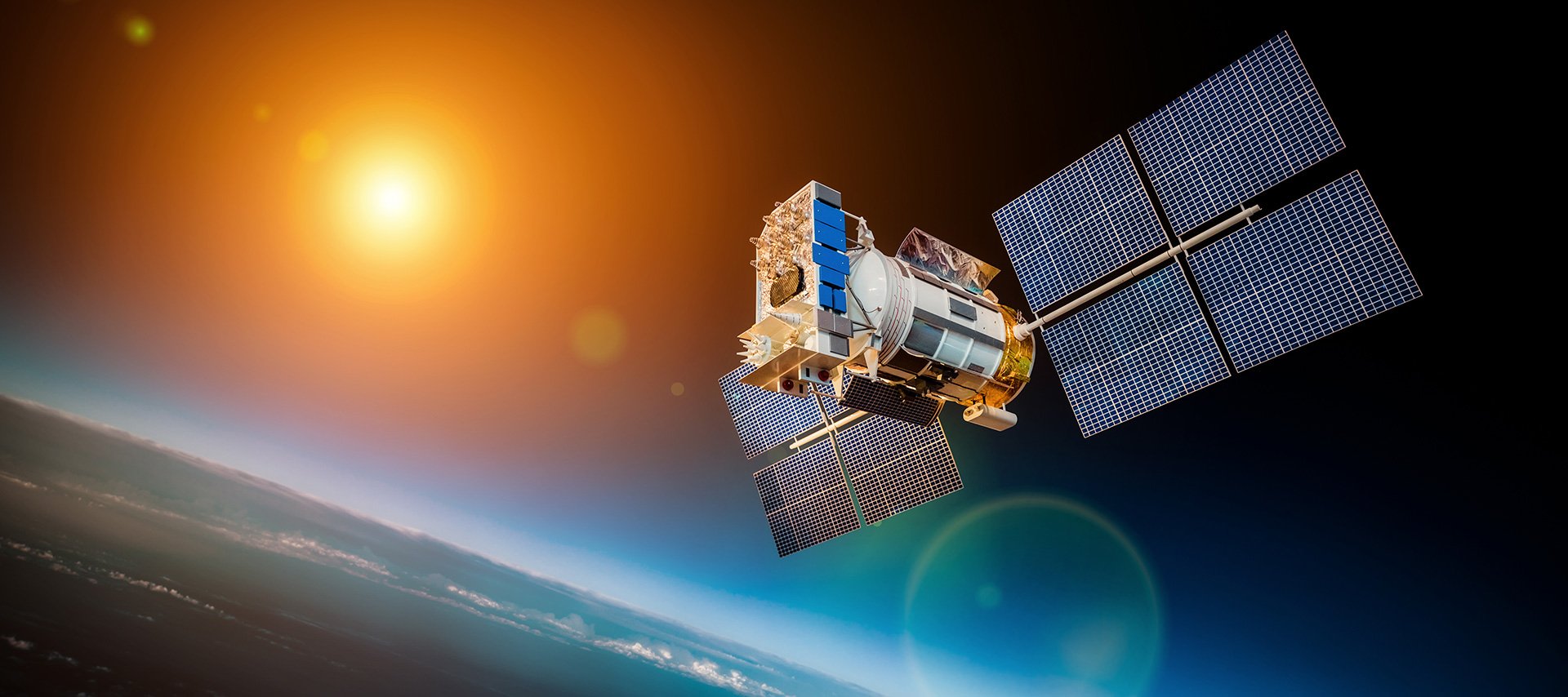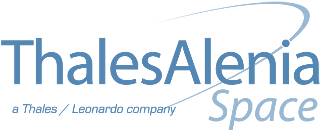
Statistical Analysis of EROSS Satellite GNC System by Monte Carlo and Linear Covariance Analysis
PROJECTS · MATH, PHYSICS & ENGINEERING
Statistics, Satellite Control
1,000h
Apr. 2021 - Sept. 2021
INTRO
Project Description
The objective of this project, in collaboration with Thales Alenia Space and the University ISAE-SUPAERO, is to develop a tool to analyse the performance of the EROSS+ satellite GNC system in terms of position and attitude uncertainty.
To achieve this goal, two main approaches are followed for the analysis: a Monte Carlo Simulation, and Linear Covariance Analysis. A comparative case-study analysis has been performed between these two techniques, examining the advantages and disadvantages of both of them, and implementing a close-loop GNC system design to analyze the navigation and guidance laws that result in the best performance for the EROSS IOD satellite mission.
SKILLS
Fields of Expertise
Research:
Math/Physics:
Statistical Analysis (Monte Carlo, Kalman Filtering, Linear Covariance Analysis…):
Coding (MATLAB):
Scientific Writing:
Complexity: ★★★★☆
Tools: MATLAB, Statistical Analysis
Project Type: MSc. Thesis
ABOUT
Abstract
Over the last few years, there has been an outstanding increase in the population of satellites orbiting in the vicinity of the Earth. The trend is not expected to decrease soon, and can lead to important problems in the future of space exploration. One of the main contributors to this problem is the current lack of on-orbiting servicing capabilities to repair orbiting satellites, which could avoid the immediate need to launch and replace current satellites when they are no longer operational. It is in this context where the project EROSS led by Thales Alenia Space arises, aiming to design and develop one of the first European on-orbiting servicing operation satellites.
One of the main challenges of the EROSS satellite lies in its capability to precisely locate the position and attitude of the servicer satellite, in order to perform high-precision rendezvous and servicing operations. As consequence, the main objective of this investigation is to develop a tool to analyse the performance of the EROSS GNC system in terms of position and attitude uncertainty, in order to satisfy the mission precision requirements. Two main approaches are followed for the analysis: a Monte Carlo Simulation, and Linear Covariance Analysis. The Monte Carlo analysis approach offers a quick implementation on the GNC analysis, given that it can be applied to non-linear problems directly; however, it presents the inconvenience of the computation time, taking extended periods of time find a solution that assess the covariance of the GNC subsystems. On the other hand, the Linear Covariance Analysis needs a previous linearization of the GNC system model, in order to then evaluate the covariance matrices. However, despite the initial modeling efforts, it presents the huge advantage of quick computation and analysis of the GNC system performance.
The GNC analysis results obtained with the LCA, being are statistically equivalent to those of the MCA, allow the selection of the GNC configuration that best satisfies the requirements for the EROSS mission, by means of the analysis of attitude and angular rate dispersion coming from all the different combinations of GNC subsystems. The capabilities of the LCA analysis tool are put into practice with a demonstration problem of study, demonstrating how the LCA proves to be a perfect tool to perform GNC analysis of specific subsystems such controller law, navigation and guidance law, and sensor and actuator conditions. Additionally, it is finally demonstrated how the LCA can be used to perform closed-loop GNC system design, being able to choose the combination of sensors/actuators and control, navigation and guidance laws that result in the best performance whilst satisfying the requirements of the mission.
Project Tags:
Orbital Mechanics
Space Systems
Monte Carlo Simulation
On-Orbiting Servicing
GNC Analysis
Linear Covariance Analysis
Matlab
Simulink
I
Context & Research
PART I
___ CHAPTER 1
State of the Art
With the objective to provide further scientific background and to understand the foundations of the EROSS project, the present section aims to describe the most relevant investigation methods and state of the art review on on-orbit servicing and the structure of the EROSS mission developed by TAS.
One The structure of the state of the art review has been divided in two main branches, as shown in Figure 2.1. The first branch, more specifically detailed on Section 2.1, focuses on the operational context of on-orbit servicing operations, and provides a succinct review of the most recent advances, objectives, and relevant on-orbit servicing spatial missions hitherto performed. The second branch is covered in Section 2.2, and based on the previous operational review it addresses the definition of the EROSS project developed by TAS, which aims to be one of the first examples of on-orbit servicing satellite on operation.
___ CHAPTER 2
Theoretical Background
The objective of this chapter is to cover in a succinct way the main theoretical concepts that will lay the foundations for the present investigation. As depicted in the Figure below, the mathematical concepts that structure the posterior analysis are mainly four: the fundamentals of satellite attitude and position determination, the Montecarlo analysis, Linear Covariance Analysis (LCA), and the performance analysis.
___ CHAPTER 3
Investigation Methods
The aim of this section is to present the investigation methodology and procedure used for the covariance analysis of the GNC subsystem of the EROSS project, detailing the logic behind the organizational structure. The structure of the present section is distributed according to the covariance analysis procedure detailed in the scheme depicted in the Figure below.
First, the introduction to the problem is formulated, specifying the initial conditions, the mean reference trajectory, the objectives and the additional considerations to be taken into account for the demonstration scenario.
Secondly, it comes the definition of the system models for the covariance analysis. First the truth models for the dynamics, sensors and actuators are introduced. Biases, scale factors and noises are modeled as additional true states. Next, the navigation state vector and the associated navigation algorithms are defined. Note how the navigation models and the truth models are generally similar, but not identical. In our case, the navigation models will be considered identical to the truth models as first approximation to the problem, with the intention of developing a more advanced navigation algorithm model later on. Finally, the guidance and control law models are defined, whose output represent the actuator command formulated in the truth model.
Thirdly, once all the truth models, navigation algorithms and guidance and control models are fully developed, the covariance analysis process is detailed. First, the non-linear models of the GNC equations are formulated. Next, the non-linear models are linearized about the nominal state time-history. Given that the dynamics of truth and navigation states are coupled, an augmented vector is created, which creates a large linear time-varying model of the entire closed-loop GNC system [5].
Finally, once all the linear and non-linear models have been defined, the methodology for the Monte Carlo Simulation and the Linear Covariance Analysis will be covered, detailing the process and model definition implemented in MATLAB and SIMULINK for the computation of both simulations.
II
Results
PART II
__ RESULTS
Analysis Methodology
In this section, the results obtained from the MCA and LCA simulations are presented. Figure below exhibits the process followed to obtain the simulation results, applying the optimization strategy process described throughout chapter 4, and the covariance analysis methodology detailed in section 4.3.
Accordingly to this distribution and due to the nature of the problems involved, chapter 5 is divided in five main sections in order to address the presentation of the results. Section 5.1 addresses the capabilities of both analysis MCA and LCA, demonstrating its usefulness and validating the LCA method, obtaining equivalent results to those of the MCA but more efficiently.
Next, sections 5.2, 5.3 and 5.4 covers the analysis of the control law, navigation and guidance and sensors and actuators evaluations, respectively, studying the differences in terms of uncertainty between the different subsystems. Finally, section 5.5 covers the general closed-loop GNC system design, aiming to address the contribution of each subsystem to the global variance of the GNC system.
__ RESULTS
Summary of Results
Linear Covariance Analysis (LCA) is validated as an efficient alternative to Monte Carlo Analysis (MCA) for studying non-linear closed-loop systems. Simulations comparing both methods show that LCA produces statistically equivalent results to MCA while drastically reducing computation time—from 290.51 seconds in MCA to just 12.21 seconds in LCA. The results confirm that LCA accurately captures attitude and rate dispersions within a 95% confidence interval, making it a reliable tool for performance evaluation. However, some considerations arise, such as state modelization errors and per-axis variations in attitude dispersion, which can affect accuracy in specific cases.
. . .
LCA is particularly useful for analyzing different subsystems in a Guidance, Navigation, and Control (GNC) system. Evaluations of control law performance indicate that varying controller gains has minimal impact on system dispersion.
However, navigation filters, such as the Kalman filter, significantly improve system performance—reducing attitude dispersion by 90% and rate dispersion by 85%. Similarly, sensor and actuator quality strongly influence dispersion values, though the relationship between specification quality and performance is non-linear.
Finally, LCA proves instrumental in closed-loop system design by enabling efficient exploration of navigation laws and sensor/actuator configurations. A graphical analysis method is introduced to visually assess system performance relative to mission requirements. The study confirms that Kalman-filter-based navigation and high-accuracy sensors yield the best results. With its significantly reduced computation time compared to MCA, LCA facilitates in-depth GNC system design, allowing for rapid evaluation of different parameter configurations while ensuring mission objectives are met.
III
Conclusions
PART III
__ FINAL SUMMARY
Conclusions
The present work has aimed to design a Monte Carlo and Linear Covariance Analysis tool in order to study the performance analysis of the EROSS GNC system. After the completion of the objectives, this chapter provides a succinct summary of the most relevant results obtained.
In the first place, prior to address the results it was necessary to define the methodology of how the problem was going to be solved. Chapters 2 to 4 provided the necessary foundations to develop the LCA tool and compute the analysis of the GNC system in chapter 6.
More specifically, chapter 2 presented the necessary background and state of the art review of on orbiting servicing and the context of Thales and the EROSS project. Chapter 3 detailed the theoretical foundations for the later implementation of the Monte Carlo analysis and the Linear Covariance Analysis tool, and Chapter 4 described the methodology and simulation of both analysis tools. Finally, chapter 6 presented the results obtained.
The development of the MCA and LCA tools along with the GNC system analysis, has offered invaluable insights regarding the different subsystem characteristics. The comparison of the Monte Carlo Analysis and the Linear Covariance Analysis performances has validated the LCA as a suitable tool to replicate the Monte Carlo analysis statistical results, whilst highly reducing the computation time, proving to be a effective and more efficient tool of developing GNC performance analysis.
The second great virtue of Linear Covariance Analysis was demonstrated next, being its highly effectivity in studying the effect of different sub-systems on the overall GNC system performance. The comparison of control laws determined that gain tuning doesn’t have a pronounced effect on the overall attitude and rate dispersions.
Following a parallel procedure to the control laws evaluation, the analysis of the navigation and guidance laws evaluated the two main approaches of the GNC system in terms of navigation filter, showing how the Kalman filter clearly results in a drastic reduction of the final attitude and dispersions, plus also an improvement in the estimation of the accelerometer bias.
Finally, considering the efficiency of the LCA tool, the same procedure followed with the navigation and control law subsystems was applied to the general design of the closedloop system. Overall, it was demonstrated how the best overall results for the GNC system were obtained with the inclusion of the Kalman filter of navigation combined











